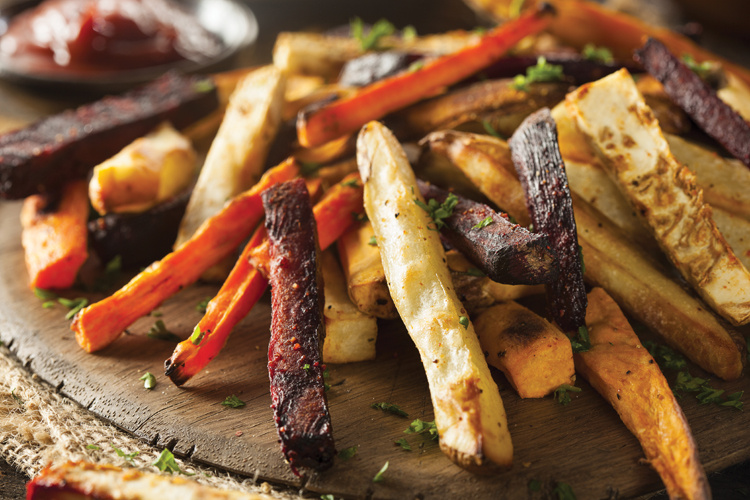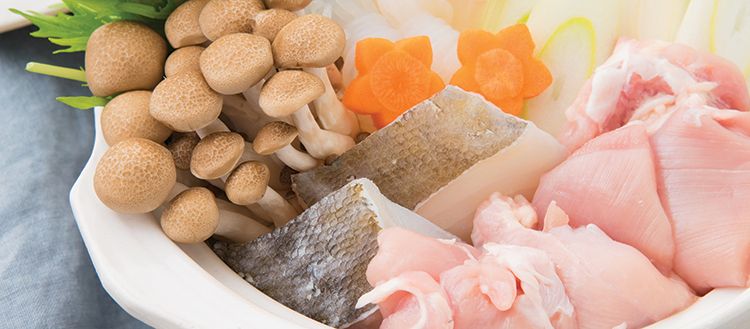Parsnips and Carrots
by Peggy Paul Casella
These earthy-sweet cousins have a lot in common: They both belong to the Umbelliferae (or Apiaceae) family of plants—along with parsley, fennel, celery, cumin, coriander and dill—which are characterized by feathery leaves and umbrella-shaped clusters of flowers. They both grow wild in Europe and West Asia, and they were both used for centuries as aromatic flavorings before being cultivated to produce larger, edible roots. In fact, according to the Oxford Companion to Food, ancient writers did not distinguish between carrots and parsnips at all, using the same Latin word pastinaca for both.
Though parsnips and carrots are considered fall vegetables, light frost actually intensifies their sugar content. That’s why many farmers store them in the ground after the growing season has ended and bring them to market throughout the winter, when fresh, locally grown vegetables are hard to find.
In terms of nutrition, parsnips and carrots are rich in dietary fiber, antioxidants, potassium, manganese, B vitamins, and vitamins K, C and E. Carrots get the prize for immune-system-boosting beta-carotene (they’re the nutrient’s namesake, after all) and more than 100 percent of the recommended daily allowance of vitamin A. Parsnips contain high levels of folate, which aids in heart health and helps boost metabolism. While all common parsnip varieties are icicle-shaped with thin outer skins and creamy, off-white flesh, carrots come in a rainbow of colors, including white, yellow, orange, red, magenta and purple.
Choose parsnips and carrots that are firm with no obvious blemishes or hairy rootlets. If you buy them with their tops still intact, clip off the greens before refrigerating and use them in pesto, or sprinkle them over salads and other dishes in place of fresh herbs. (If the greens are not detached, they will suck the moisture out of the roots over time.) The parsnip and carrot roots will keep in a loosely closed plastic bag in your refrigerator’s crisper drawer for about two weeks.
Uses: Roast them, add them to soups and stews, slice them for gratins and other casseroles. Cut them into sticks to make oven fries. Shred them for quickbreads, cakes, muffins and other baked goods. Shave, shred or chop them into raw salads and slaws. Pickle them. Boil and mash or purée them as an alternative to mashed potatoes.
Carrot and Parsnip Oven Fries
serves 4-6
Ingredients
1 pound medium carrots, scrubbed, peeled and cut into 3 x ½-inch fries
1 pound medium parsnips, scrubbed and cut into 3 x ½-inch fries (peeling is optional)
2 garlic cloves, minced
3 tablespoons extra-virgin olive oil
2 teaspoons smoked paprika
Kosher salt and freshly ground black pepper
2 tablespoons chopped fresh flat-leaf parsley
Directions
Preheat the oven to 450 F.
In a large bowl, toss together the carrots, parsnips, garlic and oil. Sprinkle the paprika over top and season to taste with salt and pepper. Toss well, then spread the mixture out in a single layer on a large rimmed baking sheet.
Roast the fries for 10 minutes, then flip the fries and roast for another 10 to 15 minutes, or until they are tender and caramelized.
Remove the baking sheet from the oven and season with more salt and pepper as needed. Then toss the fries with the parsley and serve hot.
Peggy Paul Casella is a cookbook editor, writer, urban vegetable gardener, produce peddler and author of the blog Thursday Night Pizza.










